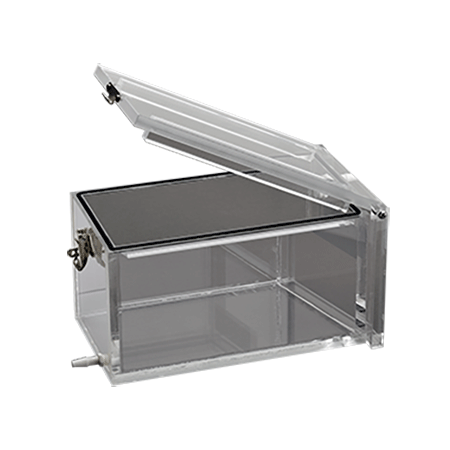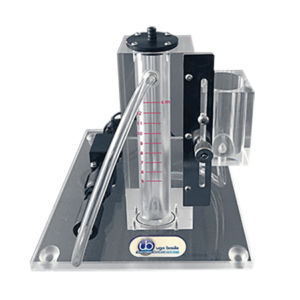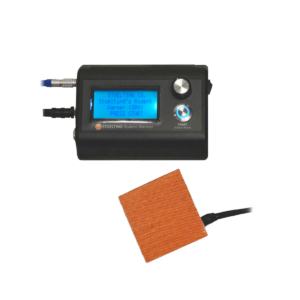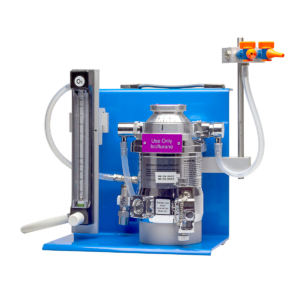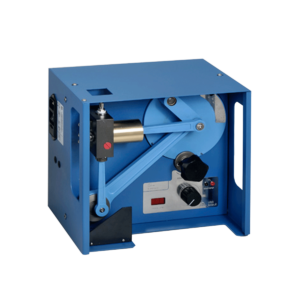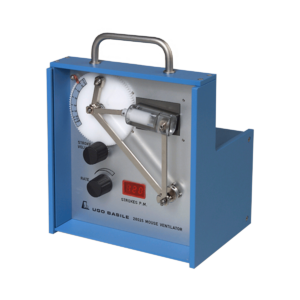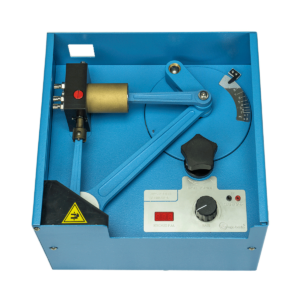Background
- Assists or stimulates respiration in a subject which is not breathing or is unable to make sufficient respiratory effort on its own.
- Mechanical ventilation is a method to mechanically assist or replace spontaneous breathing.
- For use with small animals including cats, rabbits and similar sized animals.
Highly accurate, robust, low maintenance, long life span
- Highly accurate and reliable stroke rate for providing consistent volumes. Uses a variable speed geared motor (with no backlash) linked by a novel variable stroke mechanism. Volume is adjustable whether the pump is running or stationary.
- Stroke rate (per minute) is indicated on the 3-digit LED display.
- Caters for cat/rabbit-sized animals with easily interchangeable 50 or 100 ml cylinder/piston assembly.
- Flexibility in air channeling with four ports (Intake, To Animal, From Animal and Exhaust). Input can be room air or any other non-explosive gas mixture. Exhaust air may be partially or totally recycled or collected for analysis.
- Quiet operation. High quality and robust. Low sliding friction for practically no wear or tear for a long lifetime.
- Operation may be “paused” by an external TTL logic signal, such as a digital output from a data acquisition or imaging system.
- A Start/Stop Model is also available for advanced electrophysiological/pharmacological investigations.
- Product review: “We have four of your respirators in our extended lab and they are wonderful – as is your service” Dr. Nicholas Price, Monash University, Australia
Feature | Benefit |
|---|---|
Interchangeable cylinder/piston | 50 or 100ml |
Reliable mechanics | Lifelong lasting |
Silent operation & negligible R.F. broadcasting | Quiet operation, both acoustically and electrically |
External TTL to Pause the ventilator | Optional Synchronized START/STOP for demanding electrophysiology testsa |

